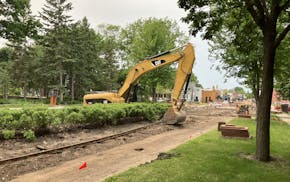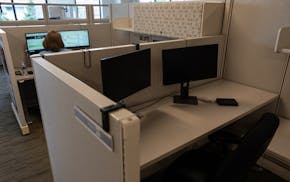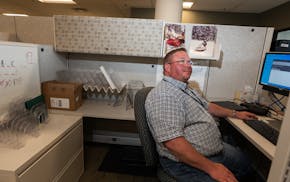Demographers like Hazel Reinhardt spend lots of time thinking about how many kids there are in Minnesota.
Those potential students, and the choices their families make, ripple across the state's K-12 school systems, where enrollment numbers are a big deal. Some districts grow, sometimes to the brim, some shrink. All get state aid based on how many students attend.
"This is where the lobbying at the Capitol comes in from school districts," said Reinhardt, a former state demographer who works as a consultant tracking and projecting enrollment for districts. "There are big winners and losers."
The projections of late have been sobering amid education finance discussions at the Legislature:
The state's school-age population could see a decline of about 5% over the next 15 years as birth rates slide. Some regions would see big losses, and less state aid, as a result, leading one veteran lawmaker to sum up the forecast as "dire."
But what about the students who are in school now — and the subject of the current funding debates? Children of color are a notable bright spot, according to 2024-25 enrollment data.
Here's a snapshot of the composition of today's student population.
Enrollment stagnates
Overall, K-12 enrollment is flat this year. But competition among schools is strong, and the number of students will be shrinking in the future, Reinhardt said.
Public schools, including traditional districts and charter schools, still dominate, but private schooling and homeschooling have been on the rise.
This year, Gov. Tim Walz has proposed the total elimination of nonpublic school funding, and private school officials hit a series of legislative hearings in protest.
"Trust me when I tell you we are saving scholars' lives," Quentin Moore, vice president of advancement at Ascension Catholic Academy in Minneapolis, told House lawmakers.
Homeschooling has jumped about 18% since the 2022-23 school year, but its leaders, too, now are fighting restrictions advanced recently by the state Senate.
Schools grow more diverse
Students of color are entering public school classrooms in steadily growing numbers.
Minneapolis and St. Paul were among the school districts to benefit from increases in students identifying as Hispanic or Latino — so much so that both actually posted slight enrollment gains overall in 2024-25.
Today, nearly 36% of the state's school-age children are students of color, and Minnesota State Demographer Susan Brower said she expects the student population to continue to become more diverse, regardless of any slowing of international immigration.
Students of color power charter school growth
Nearly two-thirds of charter school students are children of color, and even a seasoned observer like Reinhardt is moved to say: "That number kind of wows you."
At a recent Senate hearing, Tamra Rackliffe, head of schools at Duluth Edison Charter Schools, said students attend the network's schools for many reasons, including special education services and academic excellence specialists. But it's the feeling of inclusiveness that makes a difference to its diverse population, she said.
"Climate and culture change test scores," she said.
Online learning makes comeback
The pandemic spurred an explosion of online learning options in 2021-22, and then a steep drop the following year.
But it is on the rebound, and again, students of color are helping fuel the rise.
Tracy Quarnstrom, executive director of Minnesota Online High School, told lawmakers recently that the school works with students who are behind in credits, and they've embraced the school's mission, which is to restore a "joy of learning" and to place a "responsible, trusted adult in their lives."

Grand Avenue reconstruction unearths streetcar tracks, showing St. Paul's past

What we know about state workers' return to office next week

After years at home, thousands of Minnesota state workers are about to return to the office
Two injured in shooting outside University of Minnesota arena after high school graduation

